Learn how to negotiate your finances to succeed as a freelance creative

If you’re a freelance film editor, colorist, DIT, motion graphics artist or assistant editor, knowing how to handle your finances correctly can set you up for career longevity and financial security, as you deftly navigate the economic hurdles that are bound to come your way.
In this post I’m going to share some of the best resources I’ve seen, to help you learn how to navigate your finances but also how to negotiate for better rates and contracts as a freelance creative.
Whether you’re currently riding high on a wave of profitable work, or fighting to make ends meet as the industry lurches through uncharted territory, learning how to handle money is an essential life skill to master, whatever your experience and whatever the current landscape.
Both of these can improve for the better!
This post got pretty big so here’s what’s ahead!
- How much do freelance film editors make?
- Common money mistakes freelancers make
- Learn to negotiate your rate as a freelance film editor
- Freelance training for film editors and colorists
- The Best Books on Negotiation and Conflict Resolution
- Chris Voss FBI Hostage Negotiator Masterclass and book Review
- Free Business Training for Creatives by Creatives
How much do freelance film editors and colorists earn?
When it comes to talking about money, many creative professionals are nervous to ask how much others are making. It feels rude to pry and there’s always that embarrassing sense of comparison and success-ranking.
It’s foolish really – some will always make more than you and some will always make less than you.
But it is helpful to know if you’re really under-charging for your skills and to have an awareness of the ‘going rate’ in the market, when discussing your fee with a client or producer.
To this end, Katie Hinsen from the excellent Blue Collar Post Collective, shared this detailed analysis of the 2019 BCPC rates survey for US based colorists, editors and DITs, as a free insight over on Mixing Light.com, which is also an educational read.
Katie also recently shared these insights from the data into the nature of ‘diversity’ within post production, including differences in pay and types of work roles between ‘people of colour and white folks.’
You can however download all 1700 lines of the anonymous survey’s raw data for yourself here, if you’d like to interrogate the data with your own questions.
In my own quick and dirty analysis of the data, filtered down to just freelance editors and assistant editors working in the US on a day-rate, it’s interesting to see that:
- On average day rate for an editor is $285 more than for an assistant editor ($630 vs $345).
- Most editors earn between $300-$600 a day, followed by between $600-$900 day.
- Corporate/branded and Social short form content pays almost as well as commercials and unscripted TV.
- It’s interesting that trailer and promo work pays almost as well as tier 2-3 feature film work
One thing that this graph doesn’t indicate is the total number of days you’re likely work at this rate. So the music video editors might be making more than everyone else, but will likely work at lot less days at that rate, than other editors working on longer form projects like features, promos and TV work.
Update – Data from 25,000 freelance bookings – YunoJuno Rates Report
YunoJuno the UK based, premium tech and creative freelancing platform, has just released its own detailed report of freelancer day rates and project lengths. It covers a wide range of creative and technical roles, but it also provides another useful reference point for UK film and TV freelancers like myself.
Crucially for freelance film and TV folk the report suggests that in 2019 freelancers:
…had an average day rate of £352 per day, an increase of over 5% from the previous year.
The most common day rate range was £250-350 per day with the top 10% of day rates being at least £425 per day.
With the averages and top 10% rates being near to one another, this demonstrates that there are more standardised rates for freelancers in the sector.
Most projects lasted an average of 10 working days, with the top 10% of projects only lasting up to 20 working days. Here longer lasting relationships based on repeat work are key to staying busy.
You can check out the report in full here (and you should – maybe you can make a more lucrative career move!) and check out the work on offer on YunoJuno itself!
Another helpful way of seeing what other creatives are making, is through hashtags like #mographpaidme. These tend to be skewed towards those who are making ‘humble brag’ money, but it’s another data point.
Titles designer and director Dave Penn added this little nugget to the same thread, which was another useful data point for UK based editors like myself.
Sometimes the best way to raise your rates is to try to make the work go away, and then take it anyway when they don’t object to your eye-watering rates. If you’re not afraid of losing the job then you’ve got nothing to lose by pricing yourself out of it.
Understanding Your Relationship With Money
First and foremost you need to understand your existing relationship to money – it’s not like other things in life. It has power* in our lives to make us feel stressed, elated, worthy, unworthy, competent or incompetent. We all have a history with it from the way our parents talked about it, to the way we learned (or didn’t) to interact with it.
We tend to assume that those with (lots of) money are wiser, shrewder or more accomplished than those without. It is one of the many metrics of “success” we use in our culture to compare ourselves to others, even though it’s an entirely flawed way of interpreting the world.
*Well, as much power as you allow it to have at least.
But in reality money isn’t what life is about. When you hold it in your hand it’s cold and dead and has no real power to give life meaning or significance.
But so often it’s abundance or poverty in our lives becomes the weathervane of our self-worth. We feel envious of those with more money than us and judgemental of those with less. Yet, whatever we have, we always want more, it’s human nature.
Most creatives I’ve talked to over the years fall somewhere on the spectrum between Afraid of Money (“I try not to think about it”) —- Addicted to Money (“Guess how much I made last year”) and for some it’s their first thought when it comes to their work (where can I squeeze more profit from this?) or their last thought when it comes to ‘that’ side of a creative project (I love what I do so much, it’s hard to ask for money).
Whatever your relationship to money, it’s worth sitting down and thinking about it, maybe writing out your answers to these questions:
How do you feel when you think about money?
How you interact with your finances (like a careful gardener attentively tending their vegetable patch or like an intern feeding lions at the zoo and just throwing stuff over the fence and hoping for the best.)
How disciplined you are with your money? Most people are either natural savers (money = security) or natural spenders (money = freedom) – the real joy is when you have to work/live/marry someone of the opposite disposition and co-operate around money!
We will all have strengths and weaknesses around money, asking for it, saving it, using it, managing it, giving it etc. but with a little self knowledge and a little untangling from cultural lies we’ve all absorbed as normal you can operate with a lot more freedom from it and freedom with it.
It’s also worth mentioning that if you feel like this is an area you need real help in, then don’t be embarrassed to ask for it – talk to a friend, parent or mentor who seems to be financially sorted and ask them for some guidance. Don’t suffer in silence!
I’ve included the video at the top of this section because I think that fundraiser and development strategist, Kara Logan Berlin, does a great job of unpicking some of these thoughts and talking about how to ask rich people for money – obviously she’s talking about fundraising for charity or acquiring investment – but many of the principles apply to setting day rates and scoping out client budgets.
Five Mistakes I’ve made with my Freelance Finances
I thought it might be helpful at near the start of this post to share some mistakes I’ve made, and sometimes still make, about money, as these represent the best learning opportunities.
1. Not spending soon enough.
Early on in my freelance editing career I didn’t have my own laptop and editing software, so clients had to have a machine for me to work on or rent one for the day. This was fine at the start as most of the time they did. But it was a serious inhibitor to unlocking my creative and earning potential by taking on extra jobs, learning in my down time etc.
But as a natural saver (money = security) I was afraid to go out on a limb and make such a big investment, as soon as I did that laptop served me well for about 5 years and made many times more money than I ever spent on it.
2. Don’t spend money on junk you don’t need.
It is easy to trick yourself into buying an extra cool bit of gear, a ‘really handy’ plugin suite or another training subscription** and not actually ever use them. Buying something feels like a quick fix and digital hoarding can create a false sense of progress, but they’re just the same as a subscription to the gym when you never go.
Spend money on Assets not Liabilities – things that put money in your pocket and don’t just take it out. And of course it’s true that time saved is time earned – something that used to take you an hour to do, but a $100 plugin can do in 5 minutes (and you will use regularly) is a good deal!
**Don’t ask me how many courses on coding I’ve bought that I’ve not touched. I really want to learn to code, I’ve not made the time!
3. Invest in your wetware.
It always amazes me that some creatives will rush to spend 10’s of thousands of dollars/pounds on new hardware to get their renders down from 5 minutes to 2 minutes, yet baulk at spending a few hundred on professional training and investing the time to learn new skills or software, thereby adding value to their wetware, their brain.
I hope to (I think I do?!) review more training courses on this blog than gear, because I really do believe that learning new things is one of the best ways to build your career because you can bring more to the creative, storytelling process.
Although most of my gear reviews have come from my own research over the years as I’ve built out my own home edit suite, I am guilty of being enticed by new gizmos and gadgets!
If you’re looking for some great training courses and subscription services, here are some recent favourites:
- Learn Colour Grading from Professional Colorists
- Inside an Assistant Editor’s Codebook
- How to Edit a Movie Trailer
- Learn Documentary Editing from Professional Editors
- Master Filmmakers on the Craft of Film Editing
- Learning High End Finishing Techniques in Fusion
- This Guy Edits – The Go-To Editor Course Review
4. Save and Invest for the rest of your life.
One thing to learn from the COVID-19 crisis, as a freelancer or employee, is how important having savings and a cash-cushion are for balancing out the knocks and bumps our incomes can take, often unexpectedly.
Making saving an automatic part of your money management strategy is an easy way to make this happen, especially if it’s not your natural tendency. Setting savings aside helps to cover slower periods in your business bookings but will also shape the trajectory of the rest of your life.
It doesn’t really matter if you’re starting by only saving a tiny amount of your income, something really is better than nothing. It will build over time. It’s also worth setting savings goals for the short, medium and long-term and working towards those, such as building a cash-reserve first, and then simultaneously towards (for example) a house deposit and a pension.
For more on weathering the COVID-19 storm as a freelance creative, check out this recent episode from editor Zach Arnold’s Optimise Yourself podcast.
5. Raise your rates and stick to them
I talk more about my own methods and strategies around money, including raising rates, managing your finances and how to handle a freelancers cash flow in my ebook, How To Be A Freelance Creative. It’s everything I know about thriving as a successful freelancer in a quick and practical read.
One of the mistakes I made in my earlier days of freelancing, was not to raise my rates on a regular basis.
Partly this came from having many of the same clients, year on year, and feeling nervous about doing that with an existing client, but it wasn’t until I had to sub-in for another editor, and the producer offered me the same rate – nearly double what I was asking for – that I realised I was seriously under charging.
Conversely, one of the best ways I’ve found of saying ‘no’ when asked to lower your rate, context dependant on your relationship to the client, previous rates with them etc., is to say “I know you’re just being a good producer by asking that, but I’m afraid I’m unable to do that.”
If asked why you can say something like: “I’ve arrived at my rate after careful consideration and I think it genuinely reflects the value of my years of experience, technical speed and creative abilities, so I’m afraid I can’t do that. There are always cheaper options out there, but someone’s day rate isn’t the best point of comparison.”
And a day rate is a terrible way of comparing two creatives. This one might be £50 more a day but will they get it done faster and more effectively? Will they have better communication skills with the client and more interesting creative ideas? Will they solve problems more effectively and be a value creating collaborator? I don’t know, it’s a five and zero.
Learn how to negotiate your rates as a freelance creative
If you want to learn about negotiation, it’s worth learning from the best people you can. These initial resources will help you learn about negotiation from broad principles, and then we’ll narrow further into the specifics of getting work as a freelance film editor, colorist or DIT.
I’m a huge fan of Masterclass.com, having watched dozens of their classes, and reviewed many of them on this site. Lately, I’ve really been enjoying urban gardener Ron Finley’s profanity spiced masterclass as well as salivating over Aaron Franklin’s masterclass on real fire Texas-style BBQ cooking.
The recent release of Tony Hawk’s masterclass on skateboarding *almost* made me order a new board to re-kindle my youth… almost!
UPDATE June 2023 – Masterclass is now more affordable!
A new pricing tier, that works out to £10/month when billed annually, will save you £48/year compared to previous pricing of £14/month. The only difference is no downloads and 1 device.
But what’s been more directly applicable and inspirational to my freelance business career has been the excellent range of courses from media and business professionals such as
- Former Disney CEO Bob Igor’s masterclass on Business Strategy and Leadership (how to negotiate and buy everything; Pixar, Marvel, Lucas Film, 21st Century Fox)
- Starbucks CEO Howard Schultz (really interesting principles from Starbucks China)
- Spanx entrepreneur (and self-made billionaire) Sara Blakely
- Jeff Goodby and Rich Silverstein’s excellent masterclass on teaching advertising and creativity who have run an insanely successful ad agency, delivering a ton of world famous TV commercials too.
Jeff and Rich’s agency is behind iconic ad campaigns such as Got Milk? the Budweiser Lizards, E-Trade’s dancing monkey, Dorito’s fire and ice commercial and many, many more.
Lessons from their fun-filled masterclass include topics like:
- How to Make Advertising that Lives in Culture: Three Ways to Engage
- Working with Brands
- Goodby’s Rules for Creative Vandalism
- How to Tell a Story in 30 Seconds
- It’s Great, but They’ll Never Buy It: Selling a Crazy Idea
- How to Start an Agency, Specifically This One
One of my favourite moments in the class – and something I have since tried to implement in my own life – comes when they fail to win a pitch to Porsche.
The guy who was running the pitch was Guy Day from Chiat Day, the famous agency, he said “Do you want to know why you lost the pitch?”
He said “First of all these are Germans. And you guys took your coats off and rolled up your sleeves and sat down like slobs and started the presentation. You don’t do that with Germans.
You got to leave your coat on, you got to be buttoned up. And when you talk, you got to stand up and hold the room.”
And then he said something that I think was the number one best thing. It was, “You guys talk over each other.”
“You’re always saying: What Rich meant to say was this… or you interrupt each other.” and he said “That looks like you don’t trust each other.”
And that was really valuable. The next time we did it we definitely followed all those rules.
Understanding who you’re pitching to, the way they think, the culture they come from and the things that matter to them, makes a huge difference to your success rate.
But more importantly, it’s worth conducting ‘failure audits’ to ask for candid feedback, maybe facilitated through a quick conversation by a friend – on why you didn’t win the pitch, job or position.
This will give you invaluable information to iterate into improving your future attempts, that you wouldn’t get any other way.
Although all the classes I’ve mentioned in this section touch on negotiation in some way, from specific lessons to passing comments, the masterclass from the FBI’s lead international kidnapping negotiator, Chris Voss, is dedicated to the topic of negotiation from start to finish.
In a word it is superb and a must watch – I’m going to review this class and his book in more detail in the next section. It delivers a broad array of skills and really simple techniques that will help you navigate a massive range situations in life, from asking for a raise to dealing with a difficult client to parenting a teenager.
Former Disney CEO Bob Igor’s class on business strategy offers a fantastic insider’s view of some of the biggest mergers and acquisitions within the media industry and delivers some great insights on deal making and franchise building.
Depending on your ambitions for the future, this might be just what you need to know!
You can rummage through some of my previous reviews of other Masterclass.com courses here:
- Masterclass.com All-Access Pass Reviewed
- Master Filmmakers on the Craft of Film Editing
- Ron Howard Directing Masterclass
- Aaron Sorkin Teaches Screenwriting
- Hans Zimmer Teaches Film Scoring
- Martin Scorsese Teaches Filmmaking
Essential Books to Read on Negotiation

If you’re more of a reader than a watcher, these are the best books I’ve read that will give you a strong foundation on the art, process and mindset of negotiating with other people – whether that’s your significant other, a post producer or a potential client.
- Never Split The Difference by Chris Voss
- Getting To Yes by Roger Fisher and William Ury
- How to Win Friends and Influence People by Dale Carnagie
- The Anatomy of Peace by The Arbinger Institute
I’ve previously written about some of these books before in this post on 5 Great Book for Business Minded Artists, and here in this post on 5 Books on Marketing for Digital Creatives, but wanted to briefly give you a few choice quotes from each to help whet your appetite.
I’m going to review Never Split The Difference in more detail after the next section so skip there for more on that.
Getting To Yes
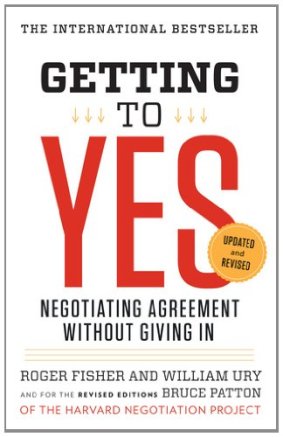
What sustains this “win-lose” mindset is a sense of scarcity, the fear that there is just not enough to go around, so we need to look out for ourselves even at the expense of others. – William Ury
I originally stumbled on Getting To Yes in a second-hand book shop, not knowing that it was considered a pillar of the negotiation ‘genre’. I encountered ideas that I hadn’t considered before, such as the BATNA (Best Alternative to Negotiated Agreement) – which means, what’s the best other option if you can’t come to an agreement.
In the case of negotiating a rate with a producer or client, the best alternative to not being able to agree could be that you don’t get the job (is that really best than reducing your rate?), or that they have to invest more time and effort in finding someone for the job when they’d happily take you (do they really want to have to do that?).
By disentangling the people from the problem, you can be ‘soft on the people’ and ‘hard on the problem.
One of the most effective things I’ve learned to say to producer’s asking me to reduce my date rate is effectively, ‘No.’ – but in several other words. Sometimes I’ll say “I’m afraid I can’t do that.” or “I know you’re just being a good producer by manage your budget, but I’m afraid my day rate is one that I’ve arrived at after careful consideration and I have a policy of not dropping it.”
A lot of the nuance of these kinds of conversations revolve around your relationship with the other person, how much you trust them to be trying to give you the best rate they can, and how much you stand to lose through not arriving at a negotiated agreement.
Sure they might be able to offer you more days of work, at a lower rate, but what’s the opportunity cost of being tied in like that, when something else might come along that’s shorter term and higher paid (or not!)?
Equally, to counter the fearful idea of scarcity, maybe taking the lower-rate for a longer hire is a good option, but can they agree to few hours, or a flexible working schedule or some other element that actually means more to you than the extra money.
Whether a negotiation concerns a contract, a family quarrel, or a peace settlement among nations, people routinely engage in positional bargaining.
Each side takes a position, argues for it, and makes concessions to reach a compromise.
The more attention that is paid to positions, the less attention is devoted to meeting the underlying concerns of the parties.
Read Getting To Yes for yourself to develop a foundational understanding of negotiating principles.
How to Win Friends and Influence People
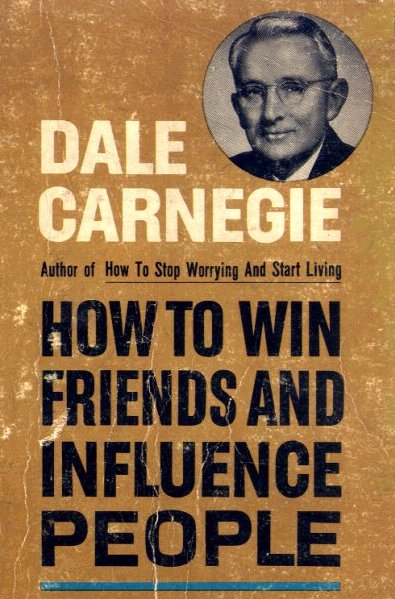
The only way on earth to influence other people is to talk about what they want and show them how to get it. – Dale Carnagie
An absolute classic that surpasses any cliched status it might have, Dale Carnagie’s How to Win Friends and Influence People, is an easy read with simple lessons to absorb by the bucketful.
You can’t win an argument. You can’t because if you lose it, you lose it; and if you win it, you lose it.
When it comes to negotiating a freelance day rate with an employer, being able to empathise with their real (rather than your imagined version of their) needs and wants; a job competently done, working with someone who can listen, deadlines met etc. is vital.
They are likely to care more about the things I’ve listed above than the idea that might loom large in your mind, of them trying to squeeze you down a few bucks a day.
Remember a name and call it easily and you have paid a subtle and very effective compliment.
For the small expense of picking up this book second hand somewhere, you’ll acquire a treasure trove of skills that will serve you well for life, such as the value of remembering people’s names, listening well and praising others sincerely, if you apply them!
The Anatomy of Peace
The Anatomy of Peace is the most recent book I’ve read on conflict, resolution and the art of negotiation. It’s an interesting read given it’s unusual stylistic approach.
The whole book is a narrative story with the learning being taught through the conversations, observations and transforming thoughts of the central characters.
There is a question I have learned to ask myself when I am feeling bothered about others: am I holding myself to the same standard I am demanding of them?
Personally, I found each chapter enlightening and helpful especially when considering my own conflicts with my nearest and dearest – increasing in frequency as Coronavirus proximity overload results in understandable abrasion.
The narrative style helps to make the principles personable and keep the pages turning. But what does a book about resolving conflict have to do with negotiating a freelance day rate?
Quite a bit actually.
To the extent that the amount of money you make justifies your sense of self worth, or the imperative need for victory you feel in ‘beating’ the other side in a negotiation dictates how ‘tough’ you’re willing to be or the way in which you arrogantly treat others in order to defend your abilities and experience compared to them as a way of making yourself feel validated – will all shape the trajectory of your working relationships – and your soul.
So if we are going to find lasting solutions to difficult conflicts or external wars we find ourselves in, we first need to find our way out of the internal wars that are poisoning our thoughts, feelings, and attitudes toward others.
If we can’t put an end to the violence within us, there is no hope for putting an end to the violence without.
If a successful negotiation leaves both sides better off for coming to an agreement, how they have conducted themselves in the process of that agreement is just as important. The process of conflict and resolution, no matter how minor or fleeting, will reveal so much about who you are and how you operate in the world.
We should spend much more time and effort helping things go right than dealing with things that are going wrong.
I really enjoyed and benefited from reading this book and I hope you will too. Check out The Anatomy of Peace for yourself on Amazon Global Stores.
Further Reading
If you’re interested in reading even more business and creativity related books, check out this post which lists every single book reviewed on the blog.
Freelance Training for Editors and Colorists
As we narrow in on the specifics of developing as successful freelance creatives – getting work, debating day rates, building a career etc. I wanted to point out two excellent courses geared towards teaching you not just essential creative skills and techniques but also vital business tactics and film-industry specific insights to help you develop a career in post-production, whether as an editor, DIT, VFX artist, sound designer or a colorist.
Those two courses are popular YouTuber and feature editor, This Guy Edit’s The Go-To Editor and YouTuber and professional colorist Waqas Qazi’s The Freelance Colorist Masterclass.
The obvious benefit of taking a course on exactly what you want to do from someone whose done it successfully is that almost all the teaching is directly applicable!
I’ve reviewed both courses in detail before, but I wanted to revisit the freelance aspects of both courses here, as they’re each excellent and could make all the difference in the trajectory of your career, with a little investment of time, energy and money.
Especially if you’re starting out with little to no industry contacts or experience.
Given that both have packed YouTube channels, (Waqas Qazi // This Guy Edits) there’s a great opportunity to ‘try before you buy’ in terms of their teaching style, content depth and skill set. However given the much larger scope of a paid training course compared to a free YouTube tutorial, there’s much more on offer in both behind the price of admission.
This Guy Edits – The Go-To Editor Training Course
This Guy Edits is an amazing YouTube channel on the craft of film editing, that you would be wise to devour as quickly as you can. But the wisdom and career experience that editor Sven Pape has to share in his paid for training course (now in version 2.0) is even more valuable.
You can check out my in-depth review of the course in this detailed previous post, but for now I wanted to focus in on the module that tackles what Sven calls ‘Personal Branding and Career Strategies’.
Some key chapters from the 16 lesson module include:
- Finding Work
- Websites and social media
- Leveraging Up
- Is Film School Important
- Getting the Meeting
- Cold Call – Providing Value
- Negotiating Your Rate
Learning from Sven’s own career trajectory, applying an entrepreneurial spirit to how you go about developing your abilities, creating new opportunities for yourself and showcasing your talents can really help get you noticed.
On the lesson on negotiating your rate Sven has some sage wisdom to share:
The producer basically said, “We’re already stretching our budget, we didn’t expect to pay this much for an editor, but we really think you’re worth it. But we can only pay you $XXX, we understand if that’s not what you’re used to being paid, but this is where the line is.”
Is it worth it to me?
Inside I was like “Hell yeah! I’ll take that deal any day.” Because I really wanted to be part of that film.
But sometimes I don’t have that feeling. Sometimes I feel like, this project doesn’t create these opportunities for me, I really need to stick to my rate. Then I would walk away from it.
As an established editor (15 years?!), it was great to learn a few more tricks of the trade from another professional editor, especially when it comes to landing gigs that you might not be 100% qualified for.
Sven’s strategies for finding work are proven and effective in his own career and he’s definitely not a snake oil salesman.
Secondly, putting my feet into the shoes of an eager young editor, I think that the course content and access to the practice material – professionally shot rushes! – will provide a serious leg up on developing both your editing abilities but also your confidence to make your way in the film industry.
For a lot of people I think the film industry can present itself as one in which it’s difficult to break into.
One where you have to pay your dues and struggle along, as given, until you can ‘catch your big break’, but in reality we are in a booming era of endless online content, the growth of streaming services and the continued democratisation of the tools and platforms needed to make high quality looking creative content.
So there’s probably never been a better time to acquire the skills to pursue your filmmaking dream, and if The Go-To Editor can help you do that, then it will have been worth every last penny.
Check out This Guy Edit’s The Go-To Editor for yourself here, and good luck!
Waqas Qazi – Freelance Colorist Masterclass
I’ve previously reviewed freelance colorist Waqas Qazi’s 22+ hour training course on everything you need to know to become a working freelance colorist, so read through the rest of my review for a lot more details on the course, the supporting practice media and examples of his training style.
Here’s a quick list of what this extensive course covers:
- Introduction (8 lessons)
- DaVinci Resolve Crash Course (37 minutes)
- Resolve Overview for Colorists (4 lessons)
- 01 – Conform (14 lessons)
- 02 – Cameras (18 lessons)
- 03 – Colour Correction (18 lessons)
- 04 – Shot Matching (21 lessons)
- 05 – Colour Grading (25 lessons)
- 06 – Studio Set Up (16 lessons)
- 07 – Freelance (37 lessons)
- 08 – Bonus (9 lessons)
I just wanted to revisit the freelance business portion of his course here, because taking this course could be transformative for anyone trying to build a freelance career in post production from nothing.
Skills are just one part of the equation, you do not understand how to hunt for a freakin’ job. How to land that job, how to hold that client and how to keep that client.
I’m gonna talk about all of that and then some in this module…
As a freelancer myself, I really appreciated that Qazi’s goal was not just to share how to colour grade but also how to get work.
He delivers a comprehensive and realistic overview of what it takes to become a freelancer – from the personal guts, hustle and passion required to the nitty gritty details of building an employable reel and tons of advice on getting work as well as using social media to your advantage.
I think he’s also realistic in communicating how much work is really involved in building a freelance career from scratch, such that students taking the course can replicate his techniques without assuming they’ll deliver instantaneous results.
The freelance module covers topics such as becoming a freelancer, building a client base, using social media to get work, exposure and developing opportunities to collaborate.
Qazi also answers tough questions like:
- How do I get clients?
- How much should I charge for a project?
- Should I work with an agency?
- How do I deal with difficult clients?
He also shares some great curated resources that you could mine for places to get work, regardless of where you’re living, when you’re starting from zero, which is another reason the course is well-suited to junior colorists or experienced colorists who are starting out in the freelance arena.
It really doesn’t feel like Qazi has held anything back in sharing the client facing tips, tricks and negotiation strategies that he uses to get and keep happy clients.
In terms of return on investment for the price of the course, this module alone would help you turn the price of admission into your next day-rate, so it’s worth considering that when you weigh up whether to invest in the course.
Check out The Freelance Colorist Masterclass for yourself here.
Chris Voss Hostage Negotiator Masterclass and Book Review
Who better to learn the art of negotiation from than Chris Voss, former Chief Hostage and Kidnapping Negotiator for the FBI.
As usual Masterclass.com have produced an exceptional course delivered by a compelling and engaging instructor. As you’d expect from a FBI hostage negotiator, Chris Voss is no pushover yet his teaching is all structured around emotional empathy, connection and understanding.
His masterclass includes chapters on topics such as:
- Mirroring and Labeling
- Creating the Illusion of Control
- Body language and speech patterns
- Bargaining
- Bending Reality
- Accusations Audit
- The Value of “No.”
What is most surprising about seeing Voss in action is how simple the techniques are to explain, for example, labelling someone else’s emotions “It sounds like you’re frustrated“, but how deftly he uses them in a conversation to steer the negotiation in the direction he wants.
Or the idea of using ‘calibrated questions’ to illicit more information from the other party without arousing their defences, or to get them to actively consider your perspective for themselves, helping to solve your problems in the process.
Calibrated questions often begin with ‘how’ or ‘what’ and avoid using the more accusatory ‘why’ word. So “Why did you do that?” might become “What are you trying to accomplish by doing that?” Or questions like “What about this is important to you?”.
In one case study a consultant who has done a lot of work for a company but not yet been paid, and is afraid that pushing for payment might kill the contract, answers a request for performing yet more work with a calmly delivered summary of the situation (unpaid invoices) and the question “How am I supposed to do that?”
This results in bringing the client into the freelancer’s world and engages them in solving the problem; “You’re right, you can’t do that, and we apologise for you not getting paid.” 48 hours later she was all paid up.
Chris Voss’ Masterclass was so enjoyable and informative to watch that I simply can’t recommend it enough, and it’s applications range far beyond the back and forth over a day rate.
They apply to everything from dealing with friends and family, guiding your children into making wise choices and the mundanity of renewing your phone contract.
The course (and especially the book) is also peppered with case studies from Voss’ career at the FBI including original recordings from the Chase Manhattan Bank Robbery or and mock negotiations such as talking with a rival or arguing with a teenager.
He also covers the crucial topic of salary negotiations by not focusing on money.
That’s how most people sink themselves in job negotiations. They don’t walk into the boss and say “How can I be more valuable to you?” – That changes my (the bosses) perspective.
You didn’t come in here to get something for yourself, you actually came in here to make my life better.
I think everyone would benefit from taking Chris Voss’ Masterclass on The Art of Negotiation, regardless of whether they’re freelancer or not, as we all face negotiations in life every day, and being empowered to navigate these more skilfully could make a huge difference to whatever happens next.
All of Masterclass’ courses are also supported by concise PDF workbooks that summarises all the key teaching in an easy to digest format. There are also ‘Office Hours’ in which you can submit questions to the instructor in person. All in all it’s a fantastic offering that I enjoy on an almost daily basis!
Masterclass is available online through your browser, native Android and iOS apps as well as on Apple TV.
Check out Chris’s class on Masterclass.com as part of their All-Access annual subscription.
Never Split The Difference Book Review
Negotiation is not an act of battle; it’s a process of discovery. The goal is to uncover as much information as possible.
I really enjoyed reading Never Split The Difference, and in many ways I’m glad I read it before the (video) Masterclass was even available, because it allowed me to digest and internalise some of the lessons before I saw them in action in the Masterclass course.
The book is much more detailed and in-depth, but the power of seeing the teaching come alive is indispensable. For instance, often in the book Voss would talk about using his ‘late-night FM DJ voice’, which is kind of hard to imagine just exactly what he means, until you hear him do it in the Masterclass. (It’s essentially low and slow.)
Another way in which the video training unpacks and exemplifies the teaching in the book is through the examples which are workshopped with an actress as Chris’ negotiation partner. Sometimes she plays an employee, a client or a teenager!
I would argue that the combination of reading the book and watching the course delivers a powerful teaching environment, that neither quite achieves alone.
What this book is really about, then, is getting you to accept negotiation and in doing so learn how to get what you want in a psychologically aware way.
You’ll learn to use your emotions, instincts and insights in any encounter to better connect with others, influence them and achieve more.
So why should you never split the difference?
Voss argues that “the traditional negotiating logic that’s drilled into us from an early age, the kind that exalts compromises, says, “Let’s just split the difference and offer them $75,000. Then everyone’s happy.”
No. Just, simply, no. The win-win mindset pushed by so many negotiation experts is usually ineffective and often disastrous. At best, it satisfies neither side. And if you employ it with a counterpart who has a win-lose approach, you’re setting yourself up to be swindled.“
“We don’t compromise because it’s right; we compromise because it is easy and because it saves face. We compromise in order to say that at least we got half the pie… so don’t settle and – here’s a simple rule – never split the difference.
Creative solutions are almost always preceded by some degree of risk, annoyance, confusion and conflict. Accommodation and compromise produce none of that. You’ve got to embrace the hard stuff. That’s where the great deals are. And that’s what great negotiators do.”
One of the things I really enjoyed about the book in comparison to the Masterclass is that there are many more case studies from his career in the FBI and the lessons he learned from them.
This not only makes for interesting reading as you learn about what an FBI hostage negotiator does, but it also helps to make sense of how Chris has arrived at, and used these, techniques in real, life and death, situations successfully.
Never Split the Difference is a fantastic book and I’d highly recommend you give it a read for yourself.
In the video above you can get a free taster of Chris’s style and approach in the Masterclass Live hour long interview, between Chris and Davis Carter, Senior Creative Producer at Masterclass. Recorded during the start of the pandemic they touch on life in Cornoa-times too.
Interestingly Davis mentions that the lesson from Chris’s Masterclass on Tactical Empathy is the most watched (at the time) on the Masterclass platform!
Free Business Help for Creative Artists
I’ve only just discovered TheFutur, but they have a wealth of material on building a business, getting clients, negotiating rates, handling your finances and so much more. Although they are coming at it largely from the brand/design industry the principles translate easily to film editing and other post-production jobs.
As there is so much material on their YouTube channel, start by browsing their helpfully detailed playlists to target your learning. Maybe a great place to start is the playlist – Top 8 videos of 2020 – which is actually a ‘best of’ of 2019.
Also if you’re an existing Mixing Light subscriber (or about to sign up!) then you’ll want to read colorist and grading shop-owner Robbie Carman’s excellent article on how he plans to run a stronger colour grading business in 2020. There’s plenty of insights on managing a company as well as interacting individually with clients.
Each year, around this time, I start thinking about the past year and what I could be doing differently/better for the year ahead of me.
I think about both creative & business improvements, but I think it’s important to not just think about the year gone by, but to use what I’ve learned to inform new goals for the coming year.
I’ve done this publicly a few times here on Mixing Light, but forming this article was particularly challenging for me because 2019 was one of the most difficult years I have had in my professional life. – Robbie Carman
Read it and put the tips into action! Or if nothing else, be sure to create the opportunity to have honest and open business discussions with your creative friends and share knowledge to everyone’s benefit.
The Most Popular Talk Ever on CreativeMornings – F*ck You, Pay Me.
This vintage Creative Mornings talk (2011) is the most popular talk ever on the platform (which you should rummage around on profusely).
Delivered by designer Mike Monteiro, and his lawyer, this entertaining and helpful talk is well worth listening to.
Starting work without a contract is like putting on a condom after taking a home pregnancy test. – Mike Monteiro

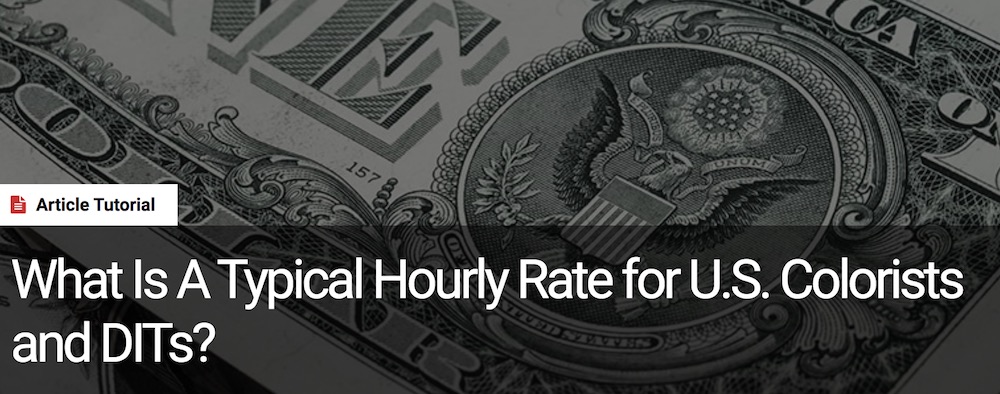

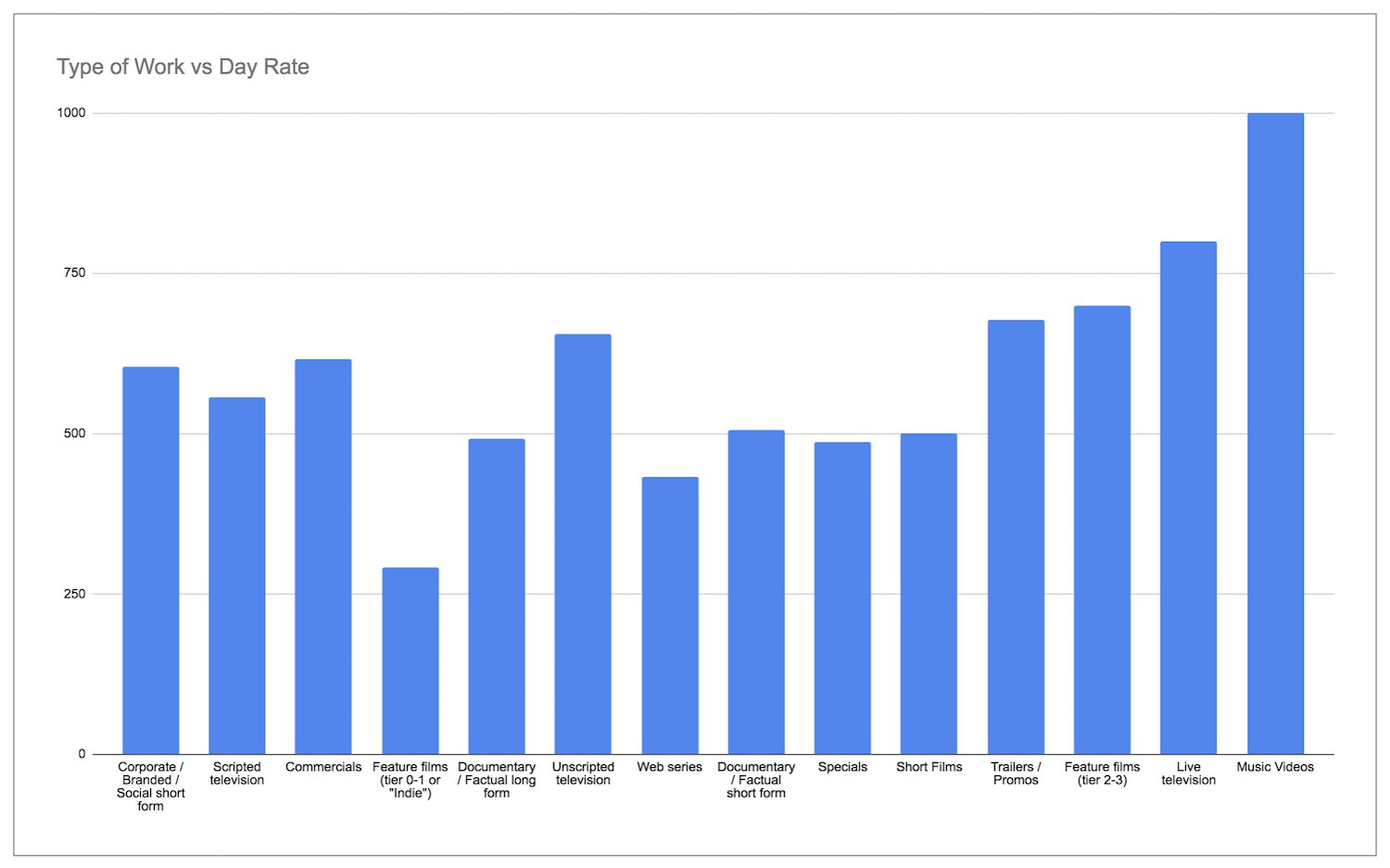
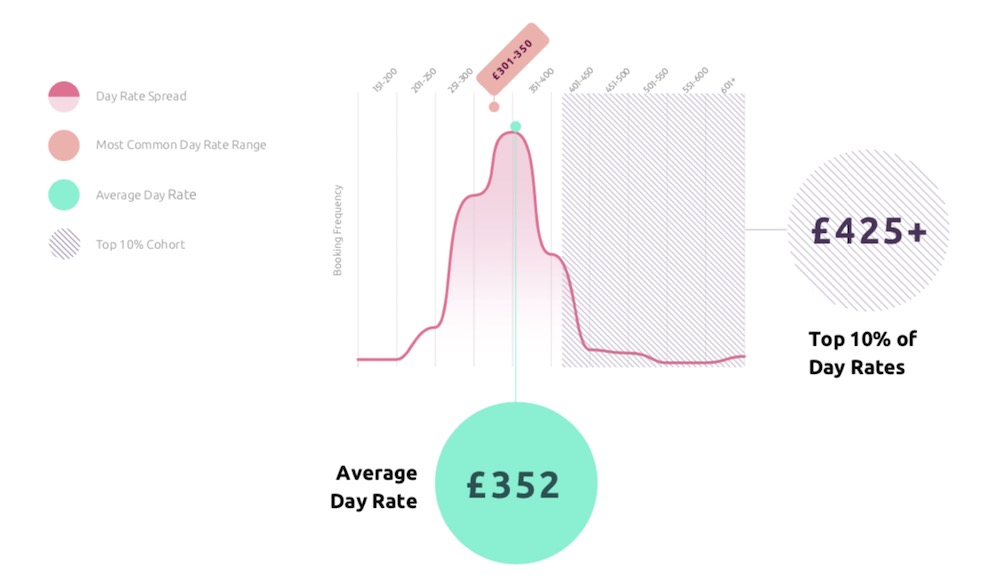


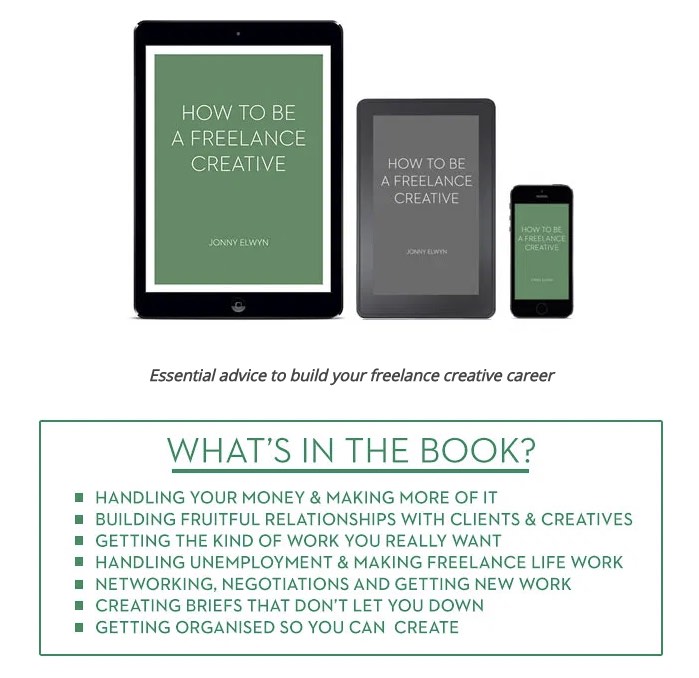

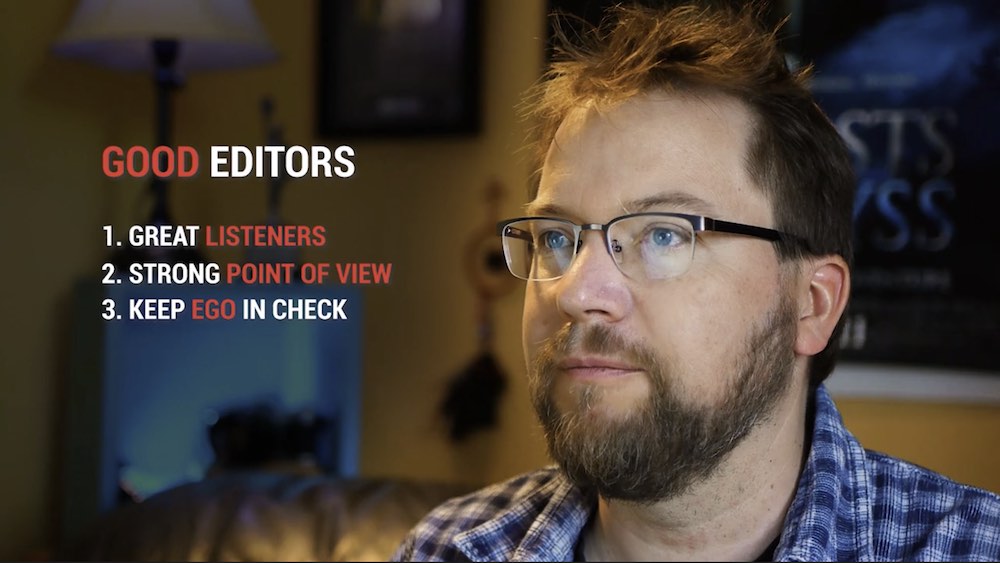
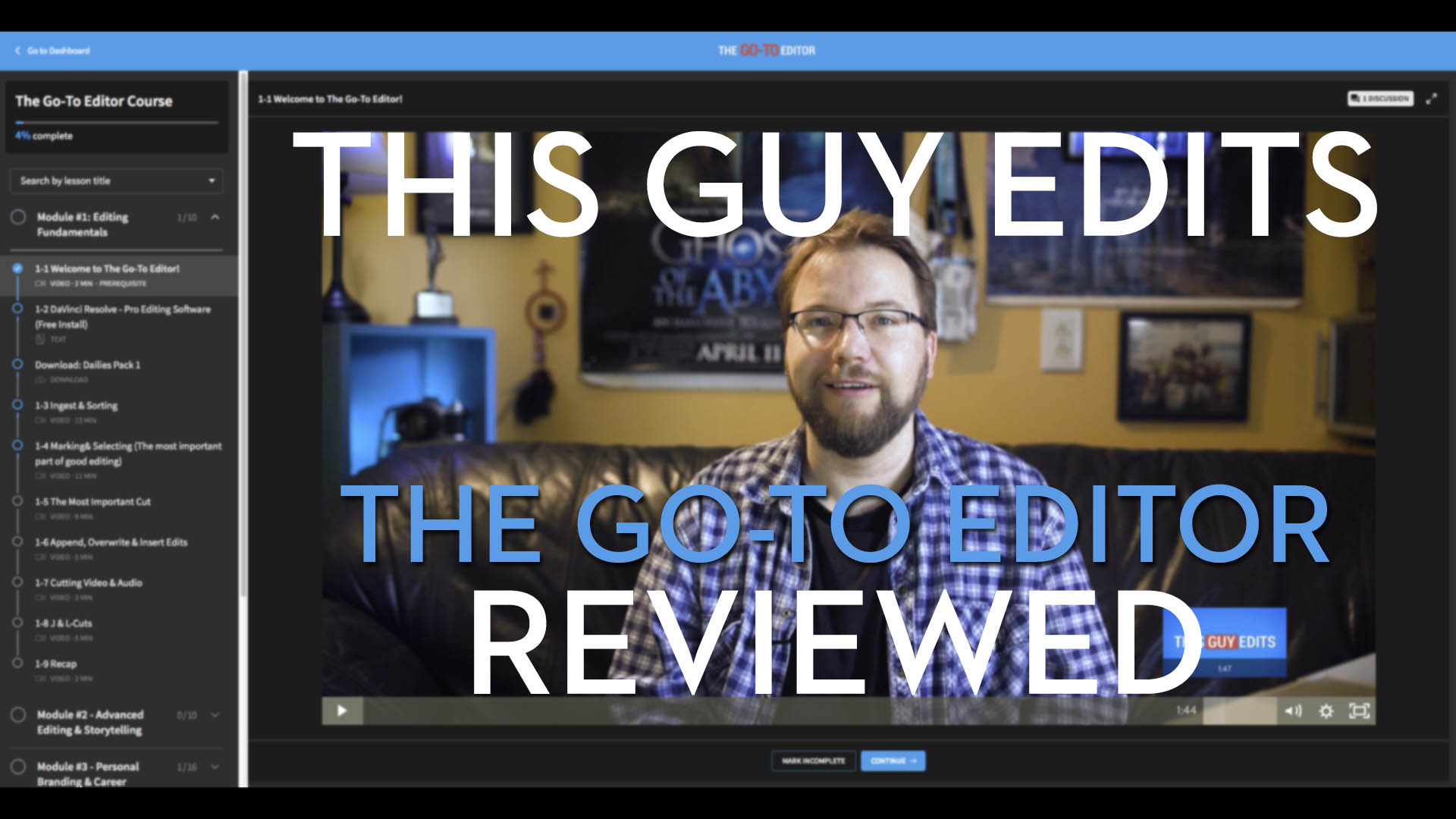

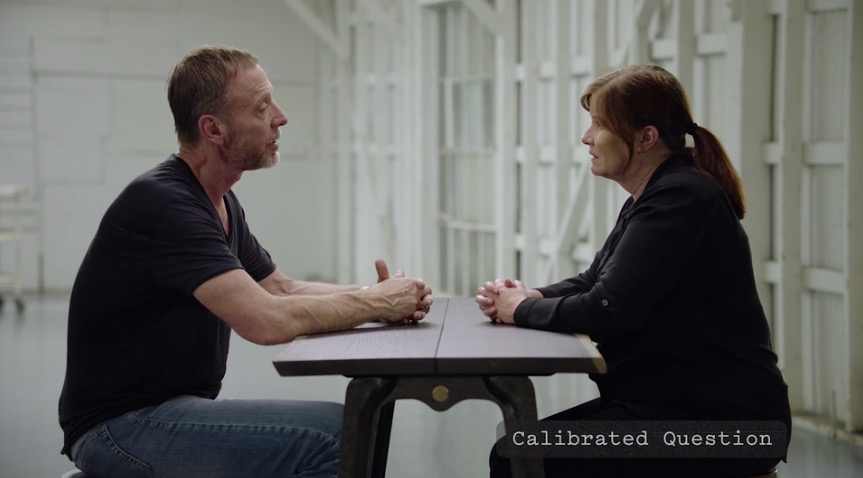
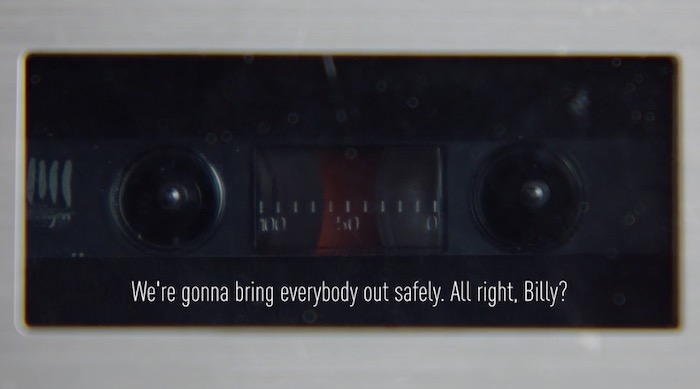
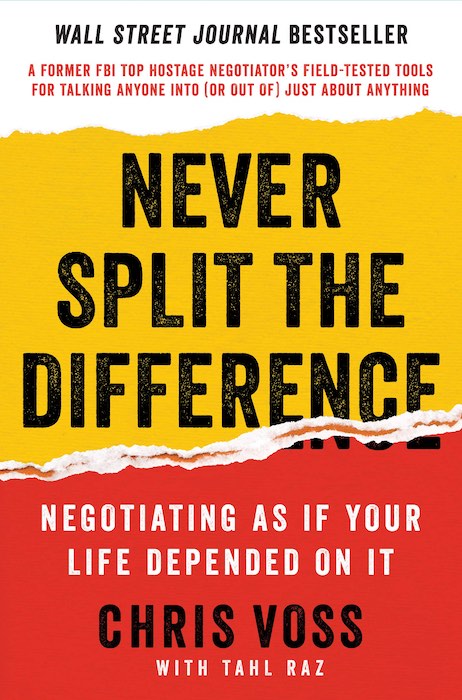




I’ve done this publicly a few times here on Mixing Light, but forming this article was particularly challenging for me because 2019 was one of the most difficult years I have had in my professional life. – Robbie Carman